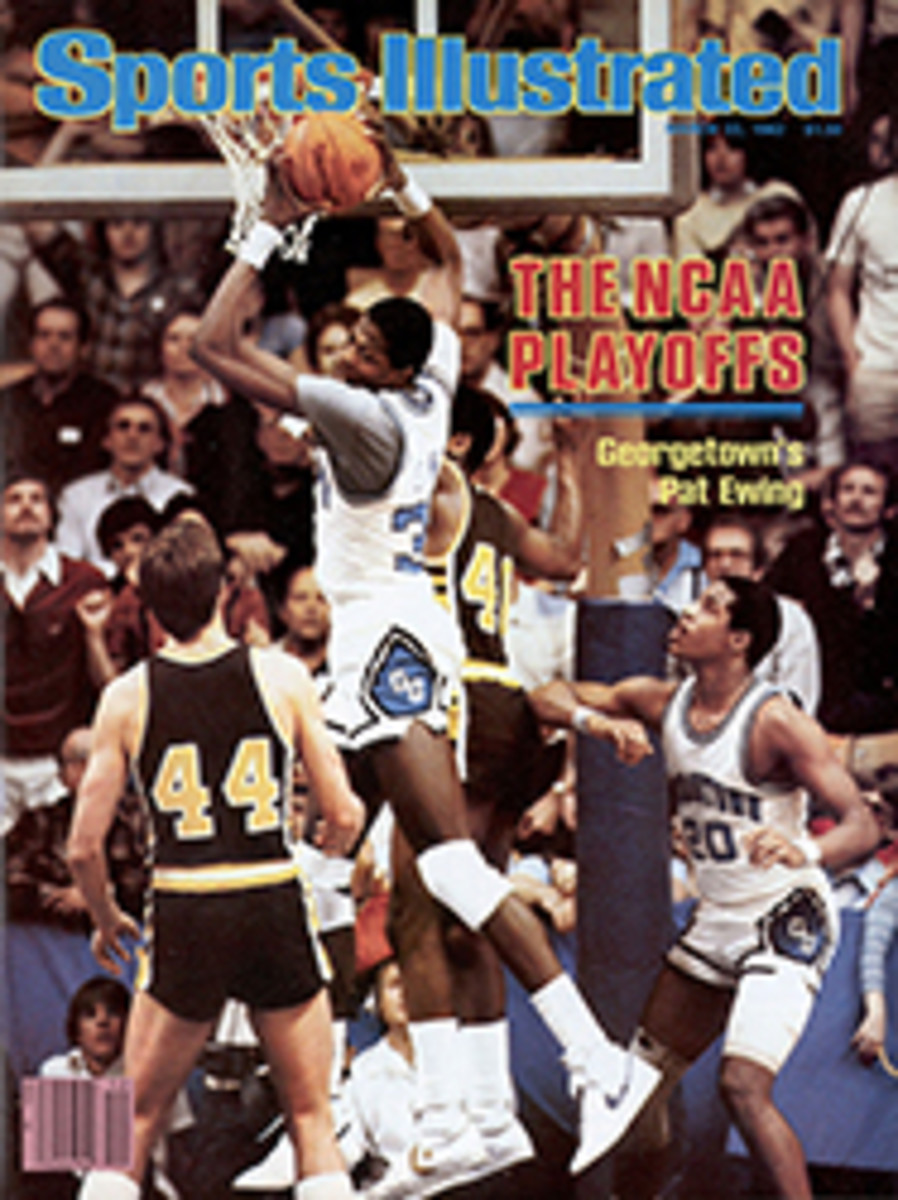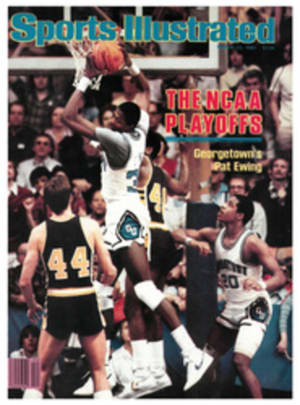
Look what's new in Jersey
Last Friday afternoon in Madison Square Garden, the last-place New York Knicks unveiled their third back-court savior of the year, Paul Westphal. After a workout, Westphal said he just wanted to be one of the guys. But the empty seats in the Garden, which hasn't been filled to capacity this season, and the anxious eyes of the Knicks' top brass told of greater expectations.
A bit earlier, just six miles to the west, the New Jersey Nets, winners of six of their last seven games, were working out in preparation for perhaps the biggest game of their so-called "new era," against the Boston Celtics that night. A record crowd was expected in the gorgeous new Brendan Byrne Arena. Leading the way for the Nets would be a Knicks castoff, Guard Ray Williams.
Neither team—Nets or Knicks—was ready to challenge for NBA supremacy, but the Nets had moved well ahead of their metropolitan brethren in the Atlantic Division and also to the forefront of the NBA's Division II race: the Eastern Conference minus elitists Boston, Philadelphia and Milwaukee. While the Nets lost Friday to Boston 113-109 and Sunday to Seattle 98-97, to fall to 33-32, they're almost a cinch to make the playoffs for the first time since 1978-79. You have to go back to that year to find them over .500 this late in the season. Since Dec. 16, when the Nets' record was 6-16, they are 27-16.
"Just goes to show what can happen when you finish last enough times and get all those choices in the draft," jokes Boston Coach Bill Fitch about the Nets' longtime mediocrity and subsequent reward in last June's draft. After picking up Forward Mike O'Koren and Center Mike Gminski in the first round the previous season, the Nets added starting Forward Albert King and the NBA's most consistent rookie, Forward Buck Williams, this year. Their third pick in the first round brought Ray Tolbert, who on Nov. 25 was traded with a second-round 1984 draft pick to Seattle for Jammin' James Bailey. Coach Larry Brown had been "drafted" from UCLA.
Only five of the current Nets and just one starter, Guard Foots Walker, were on the squad a year ago and starting Center Len Elmore was sitting on the Milwaukee Bucks' bench. A tender right knee had kept King out until Nov. 10. Guard Otis Birdsong, traded to New Jersey in the off-season from Kansas City, was hampered by a bad knee that has limited him to only 34 games this season.
Enter Ray Williams. A free agent after averaging more than 19 points a game for the Knicks last year, the 27-year-old Williams held out at the start of this season when New York wouldn't agree to a $500,000-a-year contract. After missing almost all of the Knicks' pre-season, Williams was traded to the Nets for Maurice Lucas.
But money turned out to be not as important to the Knicks as stability and consistency, which the team lacked even while winning 50 games a year ago. The backcourt of Williams and Michael Ray Richardson, 26, took most of the heat for the team's erratic play and early departure from the playoffs, a mini-series wipeout by Chicago. Over the past three seasons the pair had combined for 25 points, nine rebounds and 13 assists a game. Last year the numbers were 36, 11 and 13. Also, Richardson led the NBA in total steals, with Williams fifth. But the critics bayed: Williams and Richardson are running amok. One has to go.
"People never mentioned all the games we won in the closing seconds," Richardson says. "We clowned around outside, but when we were on the court we dominated other guards—points, rebounds, everything. And we were getting better and better. Management said they wanted youth, then they traded Ray and brought in people twice his age [Randy Smith, 33, from Cleveland and ex-Net Mike Newlin, also 33, designated back-court saviors 1 and 1A].
"That's why we're 29-36 today. Ask anyone in here and they'll tell you the same thing, and if they don't it's because they're too scared to open their mouths."
Knicks Coach Red Holzman says the loss of Williams is ancient history, but "I'd still love to have him." Williams has averaged 19.2 points per game since joining the Nets, leads the team in steals and assists and is third in rebounds behind Buck Williams and Elmore. In games in which Ray has scored 20 or more points the Nets are 26-8; they have a 7-1 record in games in which he has popped for 30 or more.
After a recent practice at a New Jersey recreational center, Williams was simultaneously talking with a reporter while providing color commentary of a nearby game of eight-ball while destroying said reporter at Ping-Pong, playing ambidextrously. "I just didn't like being described as ignorant and out of control in the press every day," Williams says. "No one else on the team would take those chances, but to hear them tell it I was messing everything up."
"I saw that with David Thompson at Denver," Brown says of his former team. "Every game when it got down to 'guts time,' we had to go to him. He accepted that pressure but if he didn't come through, everybody dumped on him. We know we have to go to Ray, but I don't want the same thing to happen here. Other people are going to have to step forward."
And they have stepped Forward, but not necessarily front and Center. Everyone knew Buck Williams, the 6'8", 215-pound bruiser from Maryland, would become one of the NBA's best power forwards. He's added scoring (15.4) to his repertoire of defense and rebounding (12.1 a game). And King, who started slowly because of his knee injury and contract difficulties, has become a force. The team is 22-13 with King in the starting lineup, and his stats in those games—an average of 13.6 points and 4.6 rebounds—reflect the team's rise. "I haven't been on a losing team since the eighth grade," King, also a Maryland alumnus, says. "It's always easier to play when you win."
But center is where you win championships, and Gminski and Sam Lacey, acquired from Kansas City on Nov. 12, weren't the answer. So the Nets picked up another Marylander, Len Elmore, from Milwaukee, and his seven-year experience in the pros has helped steady rookies Williams and King.
"In one game it hit me that I would have to say, 'I'm doing this,' " Elmore says, " 'now you guys follow me.' "
But the two biggest surprises are O'Koren and Walker. The former, a native of nearby Jersey City, has averaged 11.8 points a game off the bench, while splitting the small forward position with King.
And since Birdsong—who was acquired from Kansas City after he signed an offer sheet with Cleveland that would erase the national debt—suffered his knee injury, Walker has more than filled in as a complement to Williams. He's averaging seven assists a game since he became a starter 32 games ago.
But Walker didn't fit in right away. Ordered into a blowout loss to Boston on Nov. 13, Walker refused to budge and was fined. Then, when Birdsong reinjured his knee, Brown was forced to use his best Foots at starting guard. "I felt the team needed a point guard," Walker says, "because Ray and Otis weren't ready to play together."
Brown swore off the NBA when he quit as coach at Denver in February of 1979, citing "tension problems, an NBA coach's disease." He moved to UCLA, where there was a more controllable atmosphere, or so he thought. But despite a spectacular first season in which the Bruins escaped the ruins of a shaky start to advance to the 1980 NCAA championship game, Brown went back to the pros. Foremost among the reasons were the death of Bruin Athletic Director J.D. Morgan and the reinstatement of Forward Kenny Fields just nine days after Brown had dismissed him.
Brown says he could have stayed through the "Fields thing" if Morgan hadn't died and if he had been able to make ends meet financially. A lot was made of Brown's inability to buy a house upon his arrival in Westwood—but, hey, we're talking Bel Air and Beverly Hills. "That wasn't so bad," says Brown. "It was just that you had to have your little camp here and your little radio show there. You were obligated to so many people that there was never enough time to coach."
Brown verbally committed himself to the Nets in January of 1981, two months before his second season at UCLA had ended, and by now the Nets' fans have committed themselves as well. A record crowd of 19,367 showed up for Friday's game with the Celtics, and they saw the Nets at their best. And worst. Not strong enough to overpower any team, let alone the Celtics, the Nets win when everybody plays well. That wasn't the case for much of the game as the Celtics moved in front by as many as 19 points in the first half. "Championship intimidation," Elmore would call it later. But a 16-0 New Jersey run early in the third quarter cut the lead to one, and the Nets even went ahead 101-100 with 2:48 left. That they were unable to hold on to the lead against the Boston powerhouse was no disgrace, and Ray Williams had 31 points and three assists.
The Nets' remaining schedule is killing, but they should hang on to the conference's No. 4 playoff spot. They meet Boston and Philadelphia twice, division leaders San Antonio and Milwaukee once each and Atlantic rival Washington three times.
There is also a home-and-home set with the New York Knicks, and that should make for very interesting viewing, at least in Brendan Byrne.
PHOTO
At "guts time" Ray Williams has the ball.
PHOTO
Brown seems to have found a home in New Jersey.

